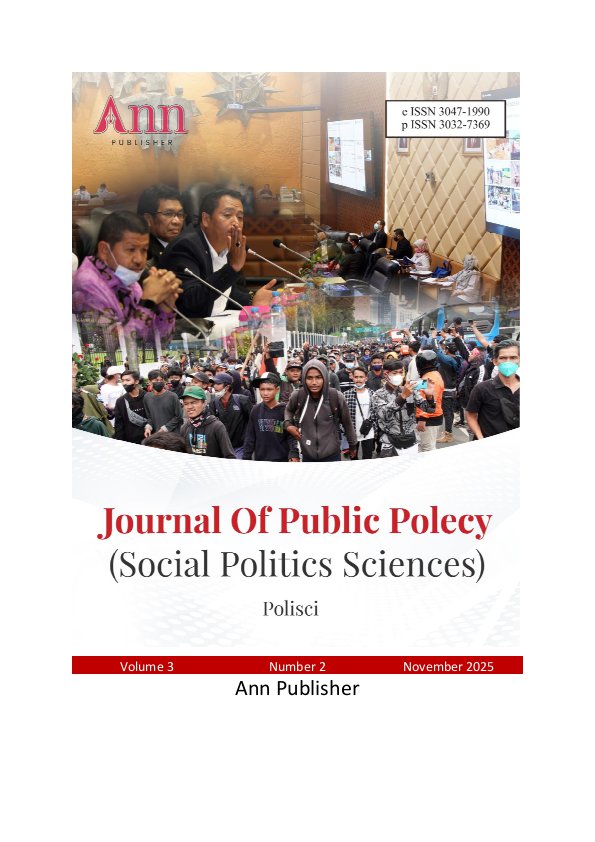Optimizing Digital Content Management to Increase the Effectiveness of Fajarcirebon.com's Online Media
Main Article Content
Abstract
Abstract
The advancement of digital media demands content management that not only delivers information but also aligns with the increasingly diverse needs, interests, and preferences of users. In an era where information is easily and rapidly accessible, audiences play a more active role in selecting content that meets their specific needs. This study aims to evaluate the effectiveness of digital content on online media by applying the Uses and Gratifications Theory, which views audiences as active subjects in selecting, utilizing, and responding to media to fulfill specific purposes such as acquiring information, entertainment, or engaging in social interaction.
Through a conceptual approach to digital content practices across various platforms, this study identifies three main issues on the online media website fajarcirebon.com: the absence of clearly presented key points that aid comprehension, the lack of external links that support informational credibility, and the suboptimal use of images that affects visual appeal and content reach. This article proposes solutions including the development of key points, the addition of external links, and the optimization of visuals to enhance user engagement and overall content effectiveness. The findings are expected to serve as a reference for online media in designing content strategies that are more adaptive and responsive to the current needs of digital audiences.
Article Details

This work is licensed under a Creative Commons Attribution 4.0 International License.
References
Universitas Swadaya Gunung Jati (2024). Pedoman Pelksanaan dan Penulisan Laporan Job
Training ilu Komaunikasi Fakutas Ilmu Sosial dan Ilmu Politk UGJ.Cirebon
Enge, E. E. A. (2012). The Art of SEO.
Andriany, D., & Triwardhani, I. J. (n.d.). News Consumption Behavior of Generation Z In The
Reading Community Via Instagram. https://edunity.publikasikupublisher.com
Daoud, M. K., Sharabati, A. A., Samarah, T., Alqurashi, D., Alfityani, A., Allahham, M., &
Nasereddin, A. Y. (2024). Optimizing online visibility: A comprehensive study on effective SEO strategies and their impact on website ranking. Journal of Infrastructure, Policy and Development, 8(7). https://doi.org/10.24294/jipd.v8i7.4860
Hermida, A. (2010). From TV to Twitter: How ambient news became ambient journalism. M/C
Journal, 13(2). http://journal.media-culture.org.au/index.php/mcjournal/article/view/220
Katz, E., Blumler, J. G., & Gurevitch, M. (1974). Utilization of mass communication by the individual. In J. G. Blumler & E. Katz (Eds.), The uses of mass communications: Current perspectives on gratifications research (pp. 19–32). Sage Publications.
McQuail, D. (2010). McQuail’s mass communication theory (6th ed.). Sage Publications.
Patel, N., & Taylor, B. (2019). The beginner’s guide to SEO. Neil Patel Digital.
https://neilpatel.com/what-is-seo/
Sichach, M. (2023). Uses and gratifications theory in digital media consumption [Working paper].
SSRN.
Hoque, S., & Hossain, M. A. (2023). Social media stickiness in the Z generation: A study based
on the uses and gratifications theory. Journal of Information Science Theory and Practice, 11(4), 92–108. https://doi.org/10.1633/JISTaP.2023.11.4.6
Hsu, M.-H., Chang, C.-M., Lin, H.-C., & Lin, Y.-W. (2020). Determinants of continued use of
social media: The perspectives of uses and gratifications theory and perceived interactivity.
Information Research, 20(2).
Ruggiero, T. E. (2000). Uses and gratifications theory in the 21st century. Mass Communication
& Society, 3(1), 3–37. https://doi.org/10.1207/S15327825MCS0301_02
Berry, J. (2023, August 30). Leveraging Uses and Gratification Theory in an SEO Strategy. Zion
& Zion. https://www.zionandzion.com/leveraging-uses-and-gratification-theory-in-an-seo-strategy/
Bhatiasevi, V. (2024). The uses and gratifications of social media and their impact on usage
behavior. Journal of Medical Internet Research, 26, e48299. https://doi.org/10.2196/48299
Gao, B. (2023). A uses and gratifications approach to examining users’ continuance intention
toward social media learning platforms. Humanities and Social Sciences Communications,
(1), 1–13. https://doi.org/10.1057/s41599-023-02239-z
Luo, X. (2002). Uses and gratifications theory and e-consumer behaviors: A structural equation
modeling study. Journal of Interactive Advertising, 2(2), 34–41.
https://doi.org/10.1080/15252019.2002.10722060
Zhou, J., Tran, H., & Kang, D. (2024). The role of visual summarization and key point framing in
mobile content consumption. Journal of Communication Design, 13(1), 45–60.
https://arxiv.org/abs/2410.15174
Schultheiß, S., Häußler, H., & Lewandowski, D. (2023). Does search engine optimization come
along with high-quality content? A comparison between optimized and non-optimized health- related web pages. arXiv preprint. https://arxiv.org/abs/2301.10105
Ruiz, S., Persaud, C., Liu, M., & Yip, C. (2024). Emotionally engaging design for interactive
journalism: Exploring the trade-off between immersion and satisfaction. arXiv Preprint. https://arxiv.org/abs/2407.18803
Wuryantini, N. P. S. (2024). Pengaruh kepercayaan, transparansi dan personalisasi terhadap
loyalitas pelanggan digital. Productivity: Journal of Management Studies, 5(1), 66–78.
https://journal.ppipbr.com/index.php/productivity/article/view/516
Diakses dari https://papers.ssrn.com/sol3/papers.cfm?abstract_id=4729248
Diakses dari https://www.gramedia.com/literasi/teori-used-and gratification/?srsltid=AfmBOop4mbX4L9KmPtgcgNqF_gdKeveS4_yEfQwH5ky3TgzsJnfc32qG#Konsep_Teori_Used_and_Gratification
Diakses dari https://fajarcirebon.com/
Diakses dari https://www.researchgate.net/publication/372953428_Understanding_Uses_Gratification_Theory
Diakses dari https://en.wikipedia.org/wiki/Uses_and_gratifications_theory


